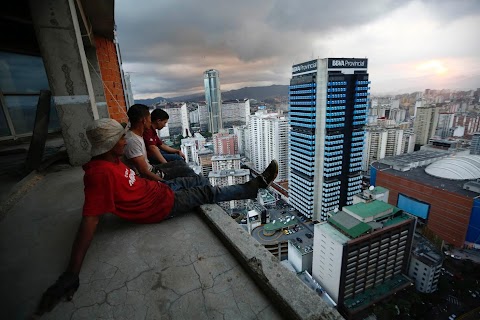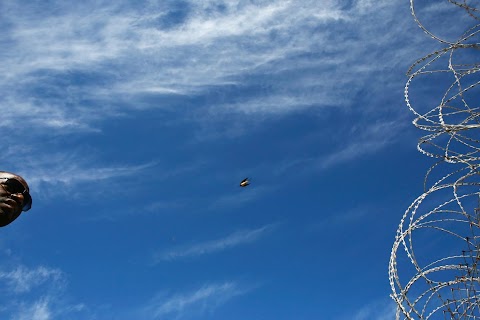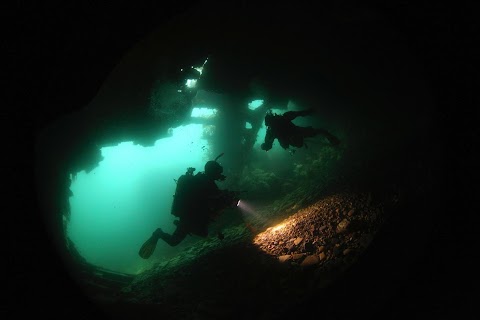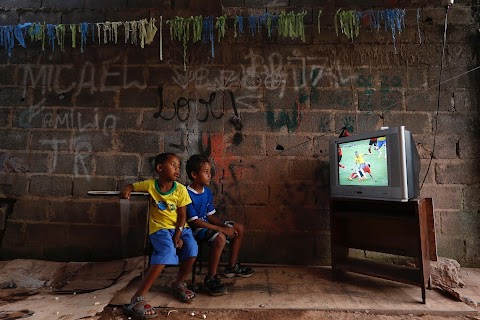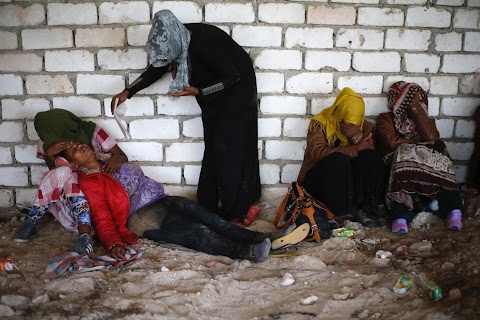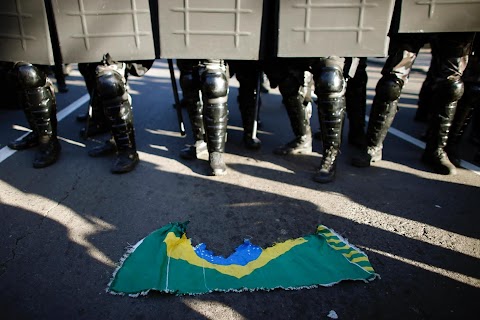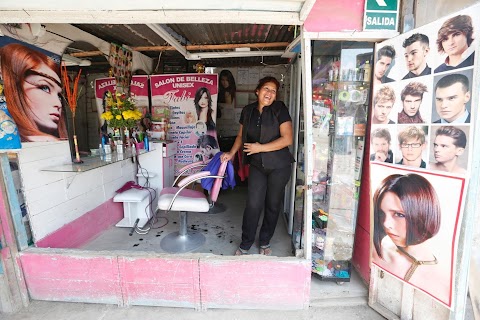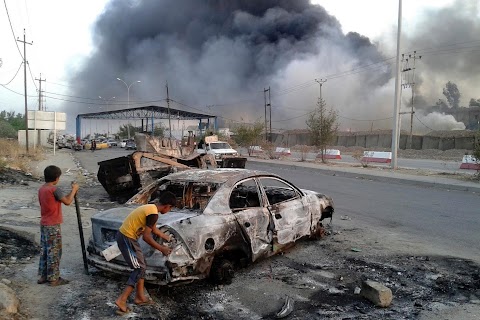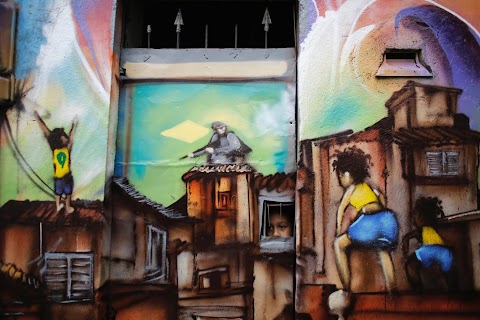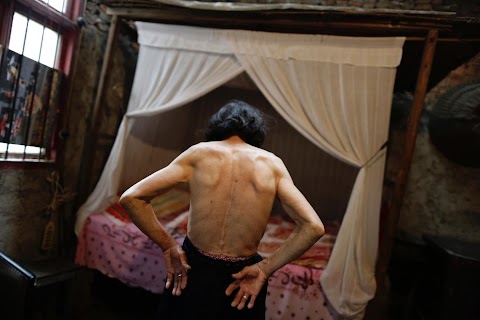
Heshan - a poisonous legacy
Qin Zhengyu suffers from skin cancer - a not uncommon affliction in Heshan village, which stands in a part of China that is rich in realgar, or arsenic disulphide.
Mines and chemical plants mushroomed in the area before being shut down in 2011 due to the pollution they caused. However, dust and runoff from arsenic still plague Heshan to this day, and villagers say that many have died from cancer caused by arsenic poisoning.

In the image above, a pair of tanks stand at a closed plant for mining realgar, or arsenic disulphide.
Arsenic and inorganic arsenic compounds - used among other things for herbicides and wood preservatives - are listed as carcinogenic to humans by the World Health Organization, and can cause cancers of the skin, bladder and lungs.
Research in the 1990s showed that arsenic concentration in the mining area near Heshan was up to 15 times the level deemed safe for farm land by Chinese government standards, according to state media.

In 2010, 157 villagers from Heshan, with a population of about 1,500, had died of cancer caused by arsenic poisoning in the previous two decades, and another 190 had developed cancer due to arsenic poisoning, the villagers wrote in a letter to the local government, seen by Reuters, seeking compensation and aid.
An official surnamed Tan at Baiyun township government, which administrates Heshan, declined to comment for this story when reached by telephone.
Xiong Demin and his wife Wen Jin'e (pictured above) both suffer from cancer, which they blame on arsenic pollution left by the mining and processing of realgar.
Xiong used to maintain machines in the mine, and had an operation in 2012 for skin cancer, which later spread to his lungs. Wen, 65, who used to wash clothes in the polluted river, was treated for skin and cervical cancer in 2011.

Wen pulls down her trousers to reveal a scar – the legacy of her cervical cancer treatment.
She and her husband each got 10,000 yuan ($1,600) from the local government for their cancer, but it was not even enough for one round of chemotherapy and radiotherapy, according to Wen. Cancer treatment had drained their savings.
Her attitude to the future is grim.
“We will just hang on for as long as we can, there's not much money for medicines," she said, "I've been buying some sleeping pills."
"I just don't want to die too painfully when the end comes."

Gong Zhaoyuan, 69, is another Heshan resident who has skin cancer.
With so many people in the area suffering from disease, photographer Jason Lee asked Gong if he kept any photographs of deceased relatives.
“I rarely keep them. Having suffered and been tortured by the disease for so long, the relationships between family members become flat,” Gong said.
“What’s gone is gone, why keep it to make myself sad?”
Slideshow

A villager washes clothes in a river in Heshan.

An entrance to a disused mine is sealed up.

Wu Yangkui, whose husband died from skin and lung cancer, sits at home in the village.

Qin Zhengyu, a 78-year-old who suffers from skin cancer that developed from arsenic poisoning, stands in her bedroom.

Gong Zhaoyuan, 69, who has been diagnosed with skin cancer, poses for a photograph as he shows the ulcers on his skin.

He shows a medical certificate from Shimen People's Hospital confirming that he developed skin cancer as a result of arsenic poisoning.

Skin ulcers are seen on his torso.

Wu Qiongyao shows the skin ointments which her husband uses for his ulcers.

A portrait of China's late Chairman Mao Zedong is taped to the wall at Gong Zhaoyuan's home.

Qin Wenji, 82, who suffers from skin cancer, watches TV in his bedroom in Heshan.

Medicines used by 71-year-old Xiong Demin are piled together for a photograph.

Qin Zhengyu, 78, shows tumours on her fingers.

A dog sleeps in front of Wen Jin'e and Xiong Demin's home in Heshan.

Xiong Dejun, 61, walks towards a bus stop on his way to hospital to have an X-Ray taken of his lungs.

Damaged cowpea seedlings grow in a field in Heshan.

A scarecrow stands in a field in the village.


